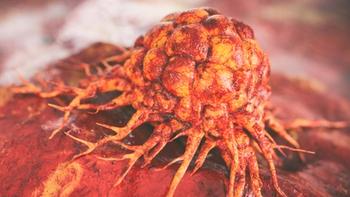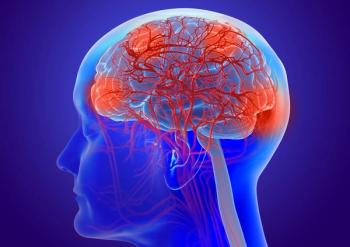
Radiomics Identifies Which Glioblastoma Patients Would Benefit From Bevacizumab
A new study is suggesting that radiomic features subjected to machine learning algorithms may be able to identify imaging signatures that defined a subset of patients with recurrent glioblastoma who may gain the most benefit from antiangiogenic therapy.
A new study is suggesting that radiomic features subjected to machine learning algorithms may be able to identify imaging signatures that defined a subset of patients with recurrent glioblastoma who may gain the most benefit from antiangiogenic therapy. A recent study
Radiomics is an approach that combines imaging and computation. It can stratify patients with recurrent glioblastoma into those who are likely to benefit from the antiangiogenic therapy bevacizumab (Avastin) and those who are not. The team analyzed radiographic images from 172 patients using a high throughput approach to automatically extract and calculate 4,842 quantitative magnetic resonance imaging (MRI) features for each patient that included information on the shape, intensity, and texture of the tumor.
“Radiomics is a noninvasive approach that applies advanced computational methods to convert medical images of cancerous tissues into a large number of quantitative descriptors encompassing a wealth of hidden information, much more than what is visible when looking at the images with the naked eye,” said study investigator Philipp Kickingereder, MD, a radiology resident in the Department of Neuroradiology at the University of Heidelberg Medical Center in Germany, in an AACR
For this investigation, patients were divided into a discovery set and a validation set (2:1) with matching clinical and survival characteristics. The researchers conducted a supervised principal component (superpc) analysis to stratify patients in the discovery set based on progression-free survival (PFS) and overall survival (OS). PFS and OS were measured from the time of treatment with bevacizumab until disease progression and death, or last follow-up.
The superpc analysis identified 72 radiomic features that were most important in predicting outcomes. Patients with unfavorable radiomic signature (high-risk group) were 1.85 times more likely to have tumor progression and 2.6 times more likely to have died during bevacizumab treatment.
Dr. Kickingereder explains that radiologic examinations are noninvasive and arbitrarily repeatable, which is an advantage over an invasive biopsy required for molecular or histological analysis. He also said sophisticated imaging analysis may in the future provide valuable complementary information to histological and molecular data. He and his colleagues are now conducting further studies with the inclusion of a control arm to clarify the value of the radiomic signature as a truly predictive imaging biomarker.
Initial phase II studies in patients with recurrent glioblastoma treated with the antiangiogenic drug bevacizumab showed promising results. However, later studies failed to demonstrate an OS benefit and recent studies showed that only patients who have tumors with distinct molecular subtypes may benefit from bevacizumab treatment, according to Dr. Kickingereder.
Newsletter
Stay up to date on recent advances in the multidisciplinary approach to cancer.





![According to John Henson, MD, “What we need are better treatments to control the [brain] tumor once it’s detected.”](https://cdn.sanity.io/images/0vv8moc6/cancernetwork/e0d29c38bb732429ae370e4ef7d1829a10c96446-2992x1684.png?w=350&fit=crop&auto=format)